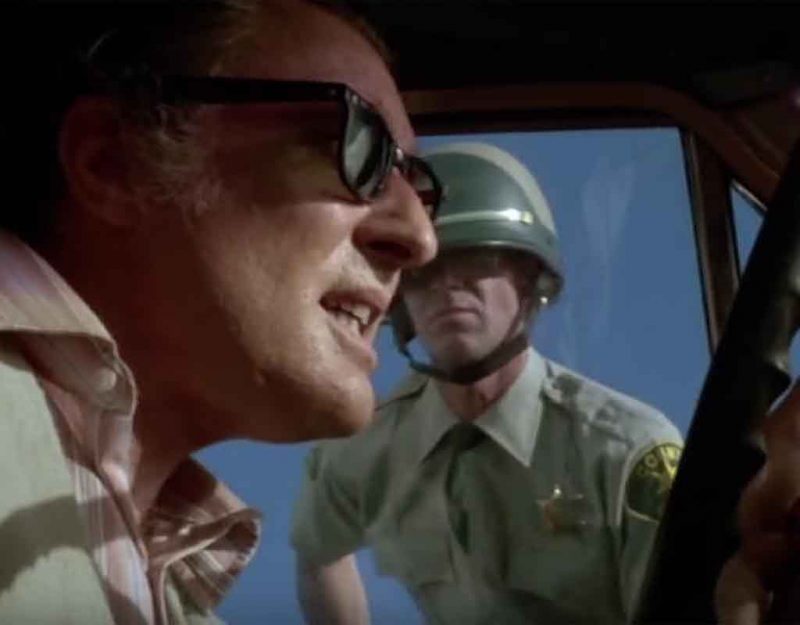Hologram Joe and the Unreliable Narrator
While the World Economic Forum advances the Fourth Industrial Revolution by advertising Chinese 5G masts and city-wide broadband to educate the poor, politicians contemplate using holograms instead of body doubles to keep tension going between characters and readers.
One example is from the Joe Biden team asking how big the hologram should be:
Big Biden would need to be around 1,000 miles tall for folks in Maine.
If that is not strange enough, France , Turkey and India are already leaving America in the dust:
French politician Jean-Luc Melenchon appeared in seven places at once this week as a “holographic” projection.
The presidential candidate made use of the Victorian Pepper’s Ghost illusion to deliver his campaign speech.
Indian PM Narendra Modi and Turkish President Recep Tayyip Erdogan have previously used this kind of technology.
But after Joe Biden’s absence from the public stage, it was suggested that “maybe a Biden hologram can handle his public speeches.”
It is easy to see that Hologram Joe presents tremendous opportunities to control the public square.
In the past, a President would consult a think-tank like the Council on Foreign Relations or Military Strategy before having important talks with the Chinese:
US military actions with regard to China must meet ambiguity with flexibility, suspicion with openness, and “defensive” belligerence with obvious resolve. Such undertakings start with as complete understanding as possible of the different historical, political and sociological engines that are more often than not critical components of Chinese security strategies.
Perhaps of greatest importance when faced with issues regarding Chinese defense strategies is developing the art of patience and taking a longer view. It’s wise to remember that the Chinese word for crisis (wei ji) can be translated as a dangerous moment in time; crises can often be defused when adjusting one’s time scale from moments to a longer frame of reference. Recently, Taiwan’s President Chen Shui-bian replied to a question regarding a timeframe for unification thusly, “thirty years is just a proposed time frame…we could delay it to 50 or 100 years. Why not?”
It is also easy to recognise above wisdom so easily available to an American President, yet his team sparked ill-tempered talks on unrelated issues:
The US pledged to raise contentious issues such as Beijing’s treatment of Uighur Muslims in Xinjiang.
This raises the question on who the scriptwriters for the hologram are, and what their intentions are. Basically, a scriptwriter wants to control the narrator, characters, and readers for the story’s benefit. This benefit is of course aimed at pleasing the sponsor of the story. One of the best ways the scriptwriter can achieve this is by creating tension. One can imagine that a scriptwriter for the most powerful “character” in the world, will have to be quite special:
*OPTIONAL LAYER: TENSION WITH THE NARRATOR
This one won’t apply to every story, but for those of you using an unreliable narrator, you can develop a sense of tension and conflict between the narrator and the reader. Can I trust this narrator? Why don’t things add up? Who can I trust in this story?
With the unreliable narrator, the reader becomes part of the story.
It takes a special type of cunning to write as an unreliable narrator who must fool the reader (initially) while leaving a trail of breadcrumbs that are apparent in hindsight.
The unreliable narrator(s) in Hologram Joe’s story are the various media outlets competing with each other’s opinion, but always talking about the same characters used in the story. The readers in the public square are therefor provided with options they can choose, creating the illusion that those are the only options.
Psychologically, readers will intuitively want to fall into this trap because they are addicted to Hollywood-style tension anyway. In this way Hologram Joe will kidnap his audience who will soon unite with him in Stockholm Syndrome style.
It is easy to identify how the scriptwriter attempts to create tension in his story. For example, he would use flashbacks, where Biden talked about chatting to Putin in his office during his last visit to Russia. Then he shortens his sentences and his words such as “You are a killer,” followed by making the reader wonder such as “you don’t have a soul” and “I don’t need you now, only after the election.”
During Chinese talks for example, one can build up tension by giving the reader more information than what the protagonist gets. The reader was given information about the (Human Rights) plight of Uighurs while no trade information was provided to Chinese representatives. This caused them (and the Reader) to increase tension thereby roping them all into the story.
The entire story is fake, but not only that, it is dangerously fake because it increases geopolitical tension for Europe and therefore should be more appropriately described as toxic.
It is best to ignore it or laugh it out of town. Or, if somebody is clever enough, make copies with conflictingly tensioned stories. After all, it is all in the broadband these days.
Tags: hologram, joe biden, unreliable narrator










